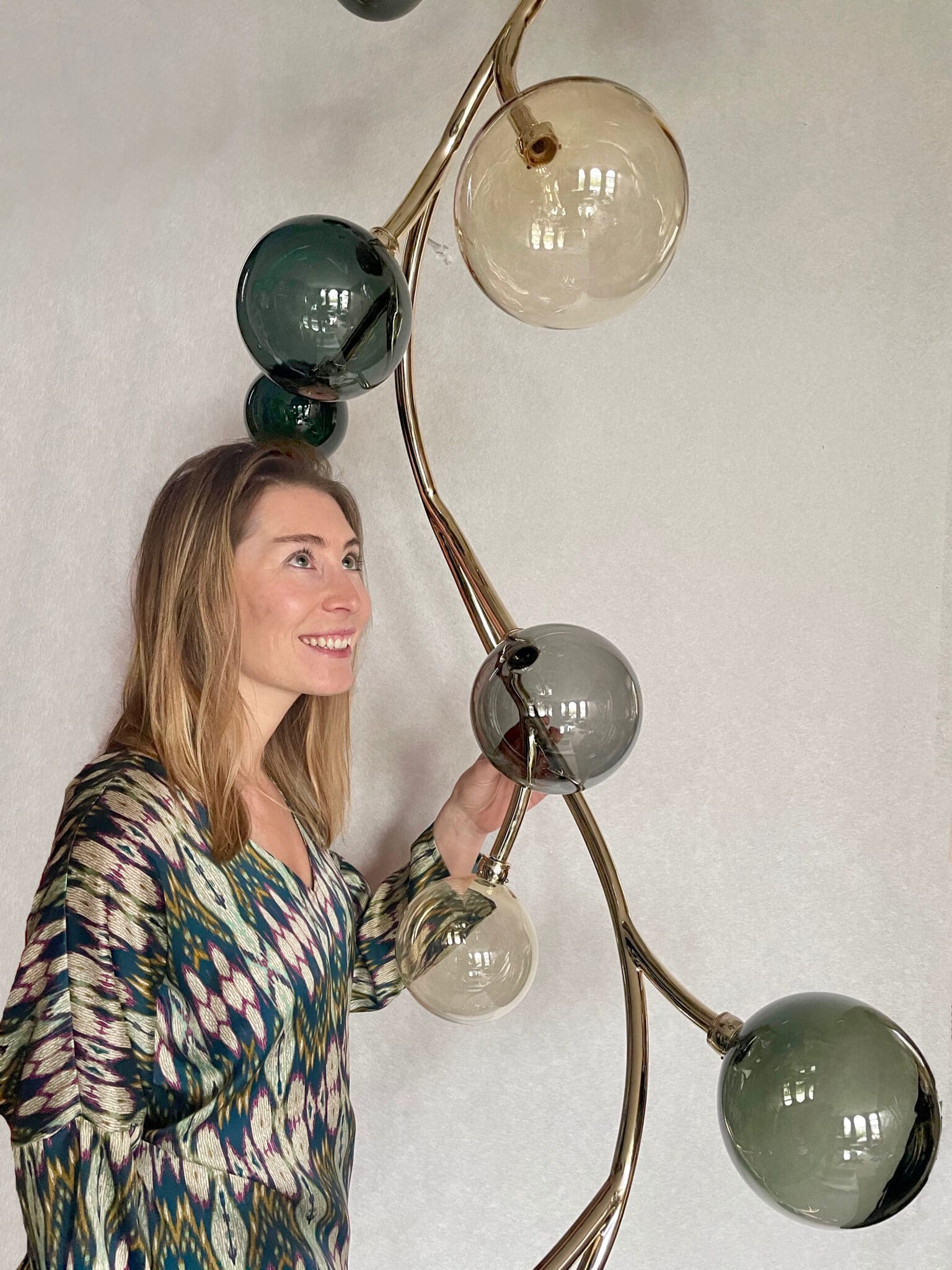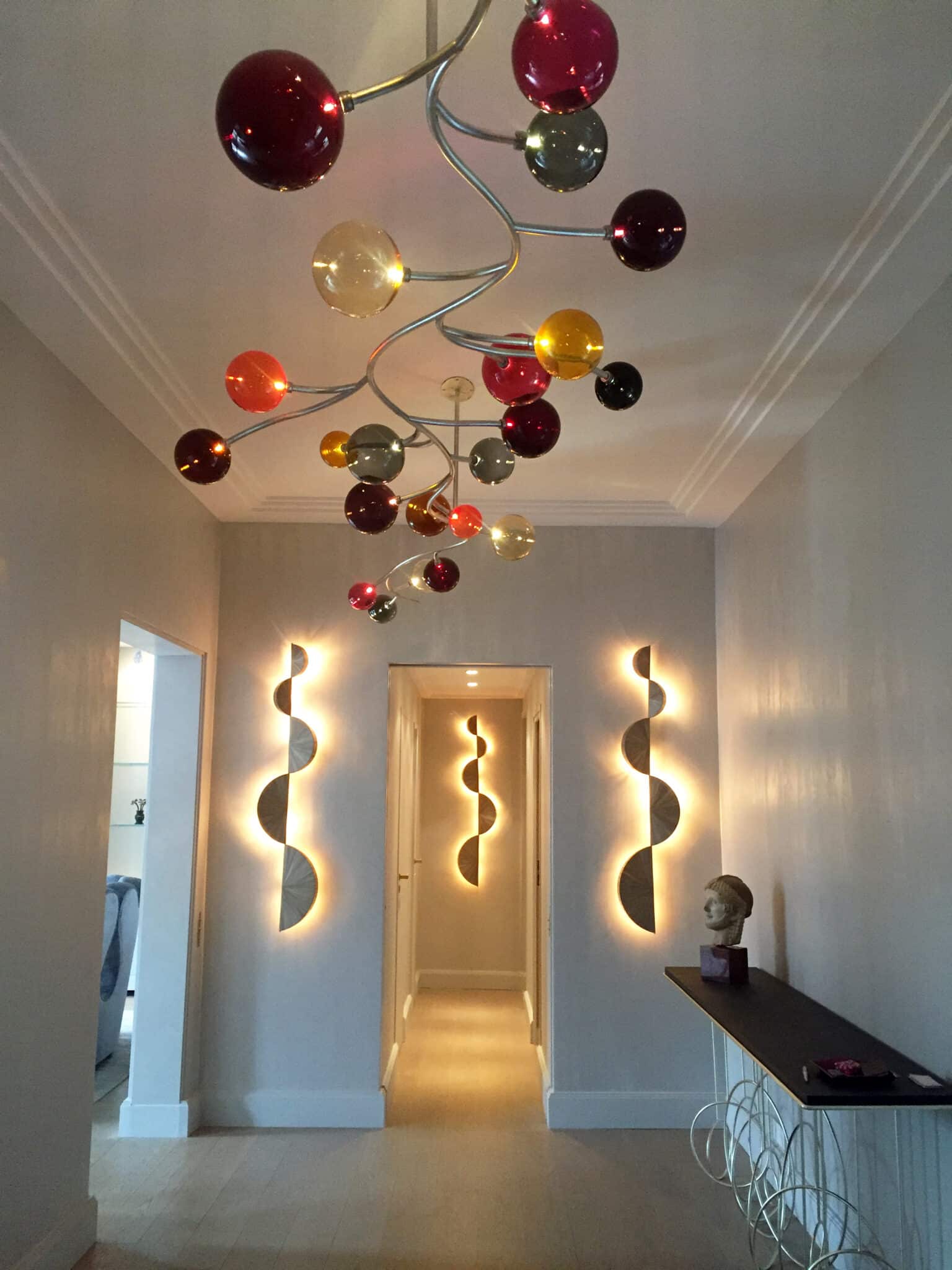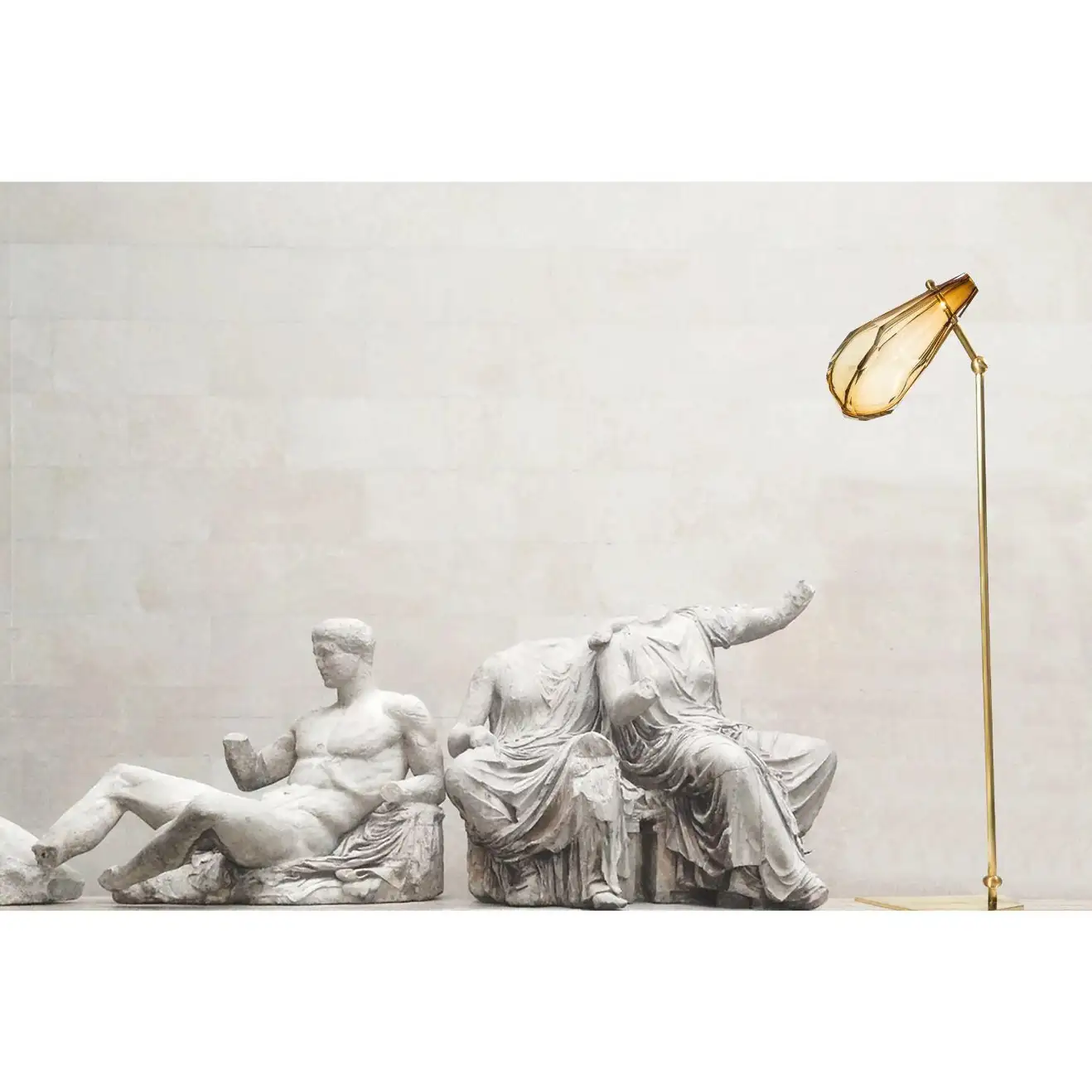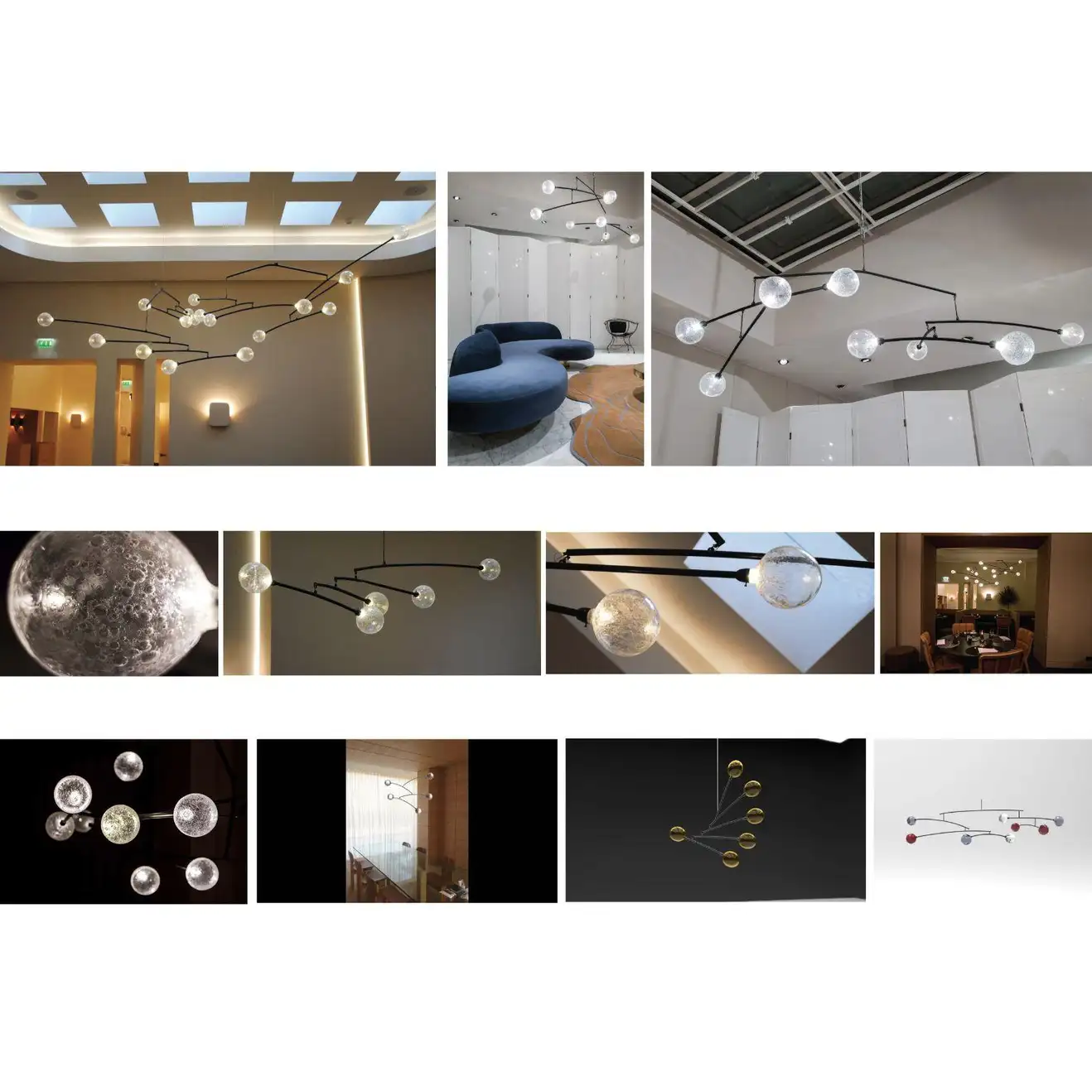
Emilie Lemardeley
1. Where were you born and where are you from ?
I was born in Bordeaux, on the Atlantic coast of France. And then I traveled a lot and lived in Paris and London.
2. What is your first memory connected to the art world ?
I don’t remember the objects I was looking at. On the other hand, as I traveled a lot with my parents, I remember the amazement and the attraction that I had systematically when we visited a new city or country, for all kinds of museums or galleries presenting objects or paintings. Even in the smallest village, I would look for a painter’s gallery or a ceramist’s workshop. Discovering local creations in Kenya, Egypt, Namibia, or even on the banks of the Volga, was a great pleasure for me.
So there was no precise event, but I have always known that artistic expression attracted me.
But for me, art is a feeling that can be found in the core of any artwork and everywhere else as well.
3. Have you always worked in the art/design field ?
Yes, I started by working in a contemporary art gallery in London, and then I worked in the auction of 20th century furnitures at Christie’s in Paris. It was a great experience, because I learned to observe, touch and preserve incredible objects that looked more like works of art than simple everyday objects. That’s when I realized I wanted to create such objects. I then went back to school and trained to be a designer at Olivier de Serres in Paris. I was 10 years older than the students here but I knew exactly what I wanted to do: I wanted to create art objects to make our daily lives more beautiful.
4. What led you to the design creation ?
The need to make people dream, to embellish their daily lives with my objects. I like to think of my objects as “interior jewels, intended to brighten up the daily life of their owner ». The materials used are often noble and rich, as one would for a jewel – fine gold, bronze, brass and glass are my favorite materials to work with-. Also, the work that I ask to the craftsmen is a delicate work which requires a lot of know-how and skills, as one would ask a jeweller to conceive a jewel. In fact, my assembly techniques are close to those of a jeweler and we use the same polishing tools for metal pieces. All this makes my objects true “everyday treasures.”
5. How would you describe your creative process and it influences ?
I am very interested in jewelry and I study their shape, their balance between frames and gemstones, their assembly techniques to highlight the stones. I personnaly use glass instead of gemstones, but as for jewels, I like to polish the metal and make it shiny. I like to adjust the glassware so that it is highlighted and crowns the object.
In addition, jewels have a very complex composition; either they are symmetrical, or their form, being small and requiring a meticulous work, is very balanced. I consider my objects to be like great jewels, interior jewels. And therefore, I take care of their composition, their balance between glass and metal, their range of colors, and the reflection of their material. I try to create a play of reflections between the different materials (brass, glass, steel). This makes them more alive.
6. Could you describe a typical day of your work ?
I don’t have a typical daily routine, everyday is different. Except maybe the time I allow myself in the morning when I wake up to capture and feel the dreams of the night. The sleepy phases are very important for my creativity. My ideas always come when my body is resting, whether it’s on a train, in a car, or in bed.
So, in the morning, I often start by drawing, and experimenting: I take clay, resin, a sheet of paper and I create, I test, I pencil.
I often answer my emails and in the afternoon, I visit the artisans with whom I work to follow the creations in progress.
In the evening I take care of my children, and then, as I work a lot with the USA who have a time difference with me, I finish my day by answering their emails.
7. Why did you choose the specific materials you work with ?
My objects are most of the time made out of glass and metal. It was obvious to me right at the beginning: my goal is to animate the interior living space. My objects therefore have sinuous and light forms with varied colors. I came naturally to glass, for the multiple colors and the play of reflections it offers. To make it stand, I chose metal for its finesse and solidity, rather than wood, which seemed heavier to me for making those lights. Metal offers the advantage of finesse and lightens the place of the object in the space. It also offers multiple possibilities of finishes : polished and shiny, brushed and matt, patinated and colored. Everything is allowed.


8. What are the technical particularities of your creations ?
The search for a certain balance. A balance between curves and straights, a balance in the color palette that I decline, a balance between transparency and opacity, between gloss and matte.
9. What advices could you give to beginning artists who would like to create sculptural design works ?
I would tell them above all to listen to their heart and that’s all. Art is the palpable translation of their impalpable identity. I believe that we also create for ourselves and to discover ourselves.
The form is a balance, it resonates in space. When you have found the right composition, you know it, it is an obviousness that imposes itself and destroys everything else. Above all, you have to trust yourself.
10. If your works had to belong to a design movement, in which one would you define it ?
My art is ornamental art, and while I used to be a little ashamed of it, now I totally affirm it. My art also has to do with sacred art, it tries to open a door, to bring meaning, and above all, it celebrates color and life. As such, it is close to the art nouveau of the early 20th century.
11. What designers have influenced you ?
The golden age of French decorative arts is for me the art nouveau and so, I admire Hector Guimard or Gaudi for the incredible creativity and freedom they showed.
I also love the Memphis group of the 60s and 70s in Italy, especially for their casualness and freedom with color.
But what moves me the most is perhaps the art of jewelry, made mostly by anonymous craftsmen with patience, know-how and creativity often bluffing. Etruscan jewelry in particular has inspired me a lot.
12. What contemporary designers do you appreciate ?
I really lovethe work of ceramists because I also practice clay and I find it a good way to see very quickly the scope of an idea, the form and the reality of the object. I find the work of Agnès Debizet and Veronique Rivemale, two French artists, very interesting. Both of them work with organic form and their works resonate with me very strongly for the link they have with nature.
13. What contemporary artists (in any kind of art) have you been inspired by ?
I admire the work of Laurent Grasso who mixes scientific experience and artistic translation. I find his work extremely varied and different from many current proposals. For me, he has opened a door.
14. If you had to summarize your creations in one word or sentence, what would it be ?
Each object and each sculpture is for me a celebration of life and of our freedom.
Proust Questionnaire with very short answers (one or a few words) :
(The Proust Questionnaire is a set of questions answered by the French writer Marcel Proust. Other historical figures who have answered confession albums are Oscar Wilde, Karl Marx, Arthur Conan Doyle, Stéphane Mallarmé, Paul Cézanne…)
1. What is your idea of perfect happiness?
To love and be loved in return
2. What is your greatest fear?
Not being able to express myself
3. What is the trait you most deplore in yourself?
My innocence, but it is also my uniqueness.
4. What is the trait you most deplore in others?
Lying.
5. Which living person do you most admire?
My husband
6. What is your greatest extravagance?
Wanting to make bigger and bigger sculptures!
7. What is your current state of mind?
I am always short of time, as I would like to have enough time and life to carry out all the ideas I have in my mind. Unfortunately, I always feel like I’m leaving thousands of unfinished ideas behind.
8. What do you consider the most overrated virtue?
To be able to step back from the fast-paced life we lead.
9. What is the quality you most like in a man ?
His understanding and support
10. What is the quality you most like in a woman ?
Her extravagance
11. Which words or phrases do you most overuse?
It’s a French expression: “les chiens aboient la caravane passe”. It’s a phrase my father often used to tell me, which means not to be too concerned about other people’s opinions.
12. Which talent would you most like to have?
I would like to have many lives!
13. If you could change one thing about yourself, what would it be?
I would try to be less impatient and more reasonable.
14. What do you consider your greatest achievement?
At the moment, a sculpture called “Proue” for a new neighborhood in Clamart, the city where I live.
15. If you were to die and come back as a person or a thing, what would it be?
A pencil to give shape to new ideas
16. Where would you most like to live?
I dream of a house on a deserted beach, prey to the waves and the wind, an end of the world.
17. What is your most treasured possession?
I am not materialistic, the most precious thing for me is my family.
18. What do you regard as the lowest depth of misery?
The lack of hope generates the deepest of sadnesses.
19. What is your favorite occupation?
Diging the earth in search of new ideas but without preconceived ideas. It is a real pleasure. Also, when I go for a walk or when I’m on vacation, my favorite game is to look for beauty in everyday life and in the flattest banality. Try it, you’ll see, you’ll never be bored again!
20. What is your most marked characteristic?
The innocent and joyful look I have on the world.
21. What do you most value in your friends?
Attention
22. Who are your favorite writers?
Andrée Chedid’s books, whose descriptions are heart touching and are like large open book paintings.
23. Who is your hero of fiction?
Peter Pan
24. Which historical figure do you most identify with?
–
25. Who are your heroes in real life?
Philosophers who can think differently about the world. Shamans who see other realities than what we see.
26. What are your favorite names?
My children’s names, Achilles, Caesar and Iris
27. What is it that you most dislike?
The lack of clarity in a speech. Speech is extremely important and using it badly is dangerous.
28. What is your greatest regret?
Not being able to choose between living at the end of the world and living in a big city. I like both and so for the moment I am dissatisfied.
29. How would you like to die?
Loved and gathered with the ones I love
30. What is your motto?
–


